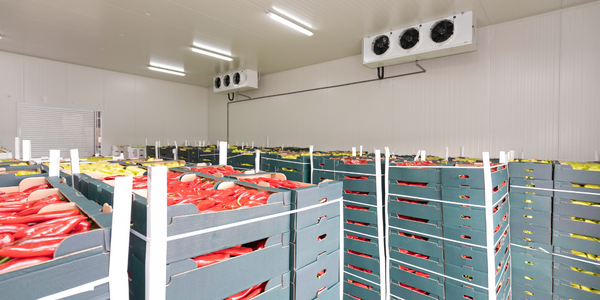Ocean Carrier Network Reduces Container Movement Costs for Better Street Turns
Customer Company Size
Large Corporate
Region
- Asia
Product
- e2open Equipment Management
- e2open Ocean Carrier Platform
Tech Stack
- Automated Matching Algorithm
- Real-Time Location Tracking
Implementation Scale
- Enterprise-wide Deployment
Impact Metrics
- Cost Savings
- Environmental Impact Reduction
- Productivity Improvements
Technology Category
- Functional Applications - Remote Monitoring & Control Systems
Applicable Industries
- Marine & Shipping
- Transportation
Applicable Functions
- Logistics & Transportation
- Warehouse & Inventory Management
Use Cases
- Fleet Management
- Predictive Maintenance
- Supply Chain Visibility
Services
- System Integration
- Software Design & Engineering Services
About The Customer
Recently, numerous major shipping lines consolidated to form a single massive shipping network. The resulting holding company set up business operations in Asia and, today, boasts a fleet of over 200 vessels, including some of the world’s largest ships. The carrier network is now one of the largest in the world, covering over 120 countries and offering regular service to every continent except Antarctica. Operating at this scale requires significant investment in equipment, most notably the standard twenty-foot and forty-foot shipping containers used by ocean carriers. This carrier network manages over 1.5 million of these containers with a value of approximately $3 billion.
The Challenge
Maintaining control of its containers is a costly and challenging concern. Besides the cost of the container itself, simply moving a container costs money — whether it is full or empty. After being unloaded, the best practice is to reuse import containers for export shipments as quickly as possible to save time and money on two empty runs. When immediate reuse cannot be coordinated, the carrier must coordinate with a third-party trucker or rely on the shipper to schedule a trucker to return the container so it is available for outbound moves. This is a manually-intensive task that cuts into profit margins. The carrier network’s massive inventory of containers and the expansion into new regions made its leaders realize they needed better control over this expensive equipment. With teams all around the world managing empty equipment, it became essential for the organization to reduce inefficiencies caused by the inability to efficiently pair empty import containers with nearby shippers for exports.
The Solution
The company chose to leverage e2open Equipment Management to synchronize import shipments with export bookings and streamline container logistics. As a result, the carrier can automate the identification of incoming containers that could be reused for export bookings nearby. E2open’s automated matching algorithm uses the carrier network’s own import, export and location data to plan street turns, container reuse or depot drops and returns. Without this automation, its land transportation coordinators have to manually search and align shipments, then schedule a trucker to handle the job. After the implementation, planners can digitally balance container inventory between depots with visibility into future export bookings. They are also able to schedule truckers at a “spot” rate that is often cheaper than contract terms. These combined capabilities would not only make overall operations far more efficient but also reduce costs and enable better utilization of the network’s assets.
Operational Impact
Quantitative Benefit

Case Study missing?
Start adding your own!
Register with your work email and create a new case study profile for your business.
Related Case Studies.

Case Study
Airport SCADA Systems Improve Service Levels
Modern airports are one of the busiest environments on Earth and rely on process automation equipment to ensure service operators achieve their KPIs. Increasingly airport SCADA systems are being used to control all aspects of the operation and associated facilities. This is because unplanned system downtime can cost dearly, both in terms of reduced revenues and the associated loss of customer satisfaction due to inevitable travel inconvenience and disruption.

Case Study
IoT-based Fleet Intelligence Innovation
Speed to market is precious for DRVR, a rapidly growing start-up company. With a business model dependent on reliable mobile data, managers were spending their lives trying to negotiate data roaming deals with mobile network operators in different countries. And, even then, service quality was a constant concern.

Case Study
Digitize Railway with Deutsche Bahn
To reduce maintenance costs and delay-causing failures for Deutsche Bahn. They need manual measurements by a position measurement system based on custom-made MEMS sensor clusters, which allow autonomous and continuous monitoring with wireless data transmission and long battery. They were looking for data pre-processing solution in the sensor and machine learning algorithms in the cloud so as to detect critical wear.

Case Study
Cold Chain Transportation and Refrigerated Fleet Management System
1) Create a digital connected transportation solution to retrofit cold chain trailers with real-time tracking and controls. 2) Prevent multi-million dollar losses due to theft or spoilage. 3) Deliver a digital chain-of-custody solution for door to door load monitoring and security. 4) Provide a trusted multi-fleet solution in a single application with granular data and access controls.

Case Study
Vehicle Fleet Analytics
Organizations frequently implement a maintenance strategy for their fleets of vehicles using a combination of time and usage based maintenance schedules. While effective as a whole, time and usage based schedules do not take into account driving patterns, environmental factors, and sensors currently deployed within the vehicle measuring crank voltage, ignition voltage, and acceleration, all of which have a significant influence on the overall health of the vehicle.In a typical fleet, a large percentage of road calls are related to electrical failure, with battery failure being a common cause. Battery failures result in unmet service agreement levels and costly re-adjustment of scheduled to provide replacement vehicles. To reduce the impact of unplanned maintenance, the transportation logistics company was interested in a trial of C3 Vehicle Fleet Analytics.

Case Study
3M Gains Real-Time Insight with Cloud Solution
The company has a long track record of innovative technology solutions. For example, 3M helps its customers optimize parking operations by automating fee collection and other processes. To improve support for this rapidly expanding segment, 3M needed to automate its own data collection and reporting. The company had recently purchased the assets of parking, tolling, and automatic license plate reader businesses, and required better insight into these acquisitions. Chad Reed, Global Business Manager for 3M Parking Systems, says, “With thousands of installations across the world, we couldn’t keep track of our software and hardware deployments, which made it difficult to understand our market penetration.” 3M wanted a tracking application that sales staff could use to get real-time information about the type and location of 3M products in parking lots and garages. So that it could be used on-site with potential customers, the solution would have to provide access to data anytime, anywhere, and from an array of mobile devices. Jason Fox, Mobile Application Architect at 3M, upped the ante by volunteering to deliver the new app in one weekend. For Fox and his team, these requirements meant turning to the cloud instead of an on-premises datacenter. “My first thought was to go directly to the cloud because we needed to provide access not only to our salespeople, but to resellers who didn’t have access to our internal network,” says Fox. “The cloud just seemed like a logical choice.”


